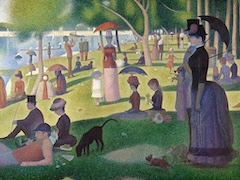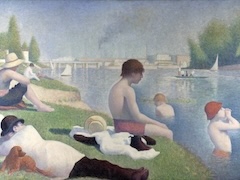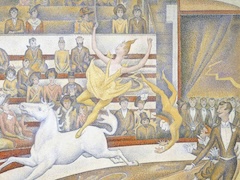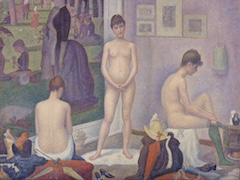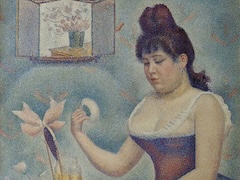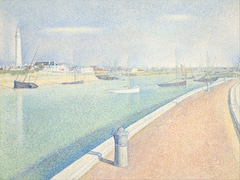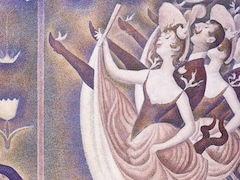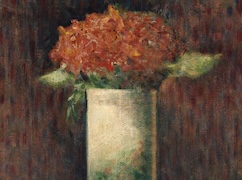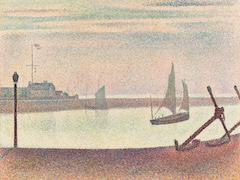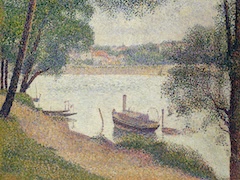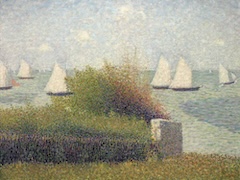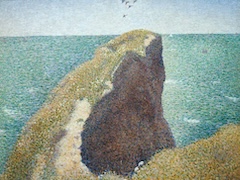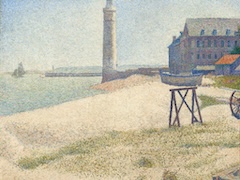Grandcamp, Evening by Georges Seurat
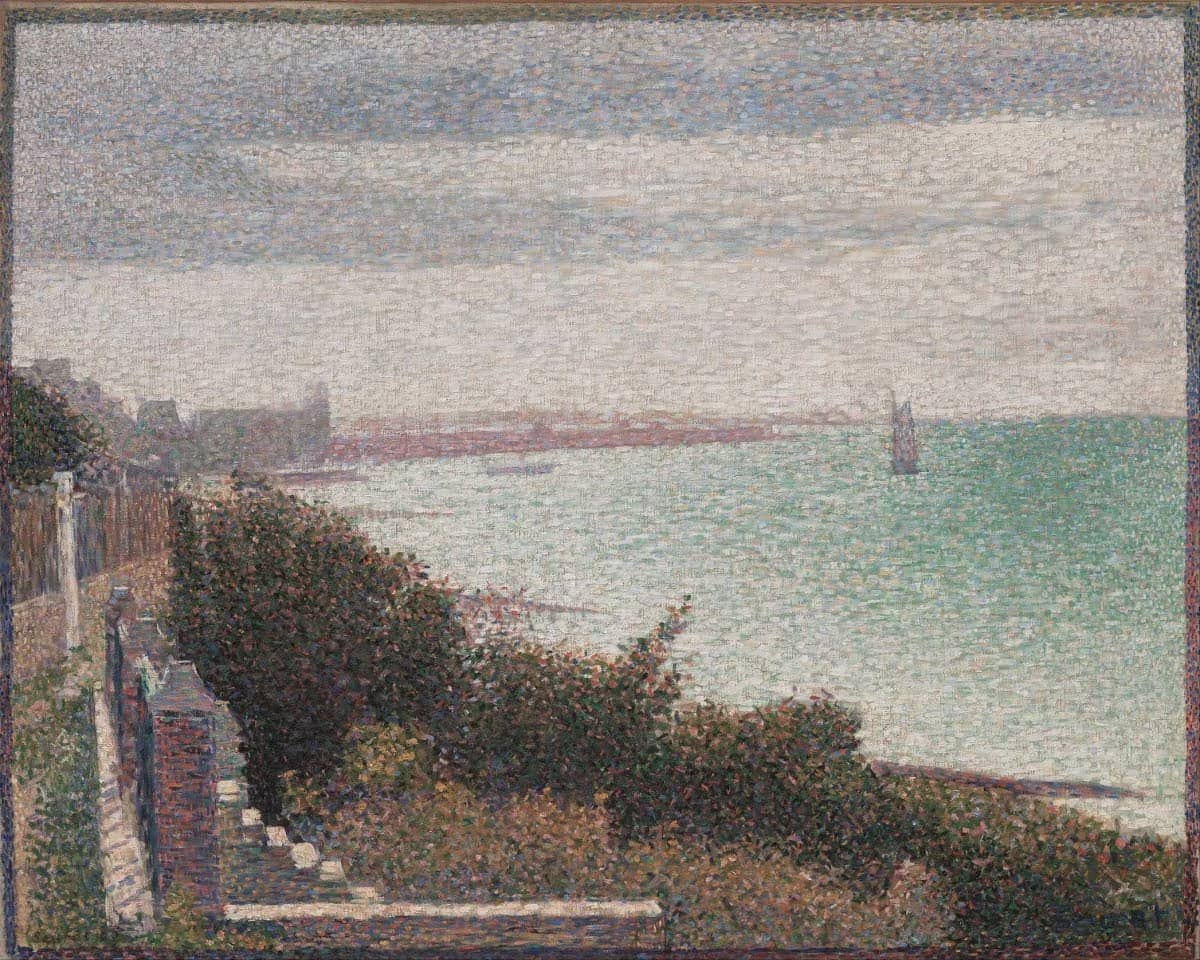
Georges Seurat did five seascapes at Grandcamp in 1885, for which eleven-panel studies display similar, tightened strokes, varied to suit their more complex subjects. In the Grandcamp, Evening, the brushwork is vertical, horizontal, and diagonal, following the lines of each section. Crisscrossed marks of similar size define the foliage in the foreground, but one finds smoother horizontals in the water and sky. The architecture in this picture seems a bit clumsy, as though Seurat were uncomfortable with the need to foreshorten its planes. Here, the texture of the strokes changes to suit the subject. The handling is jagged for the foliage, a mixture of vertical and chopped-straw marks for the fencing, broadly horizontal for the water, and smooth for the sky. In the water, we see an important parallel with the effect of the toothing plane on Seurat's wood panels. He blotted out some of the oil in his pigments so that, as his brush moved sideways, it picked up the vertical weave of the canvas without filling in the web.
Seurat would have seen that Monet represented water in this way; for example, in Cliff Walk at Pourville, he articulated the distant sea with dark greens dragged horizontally to form parallel verticals. In Seurat's canvas, shimmering verticals enliven the water's surface; this was deliberate since he essentially painted over them in the foreground and sky.

